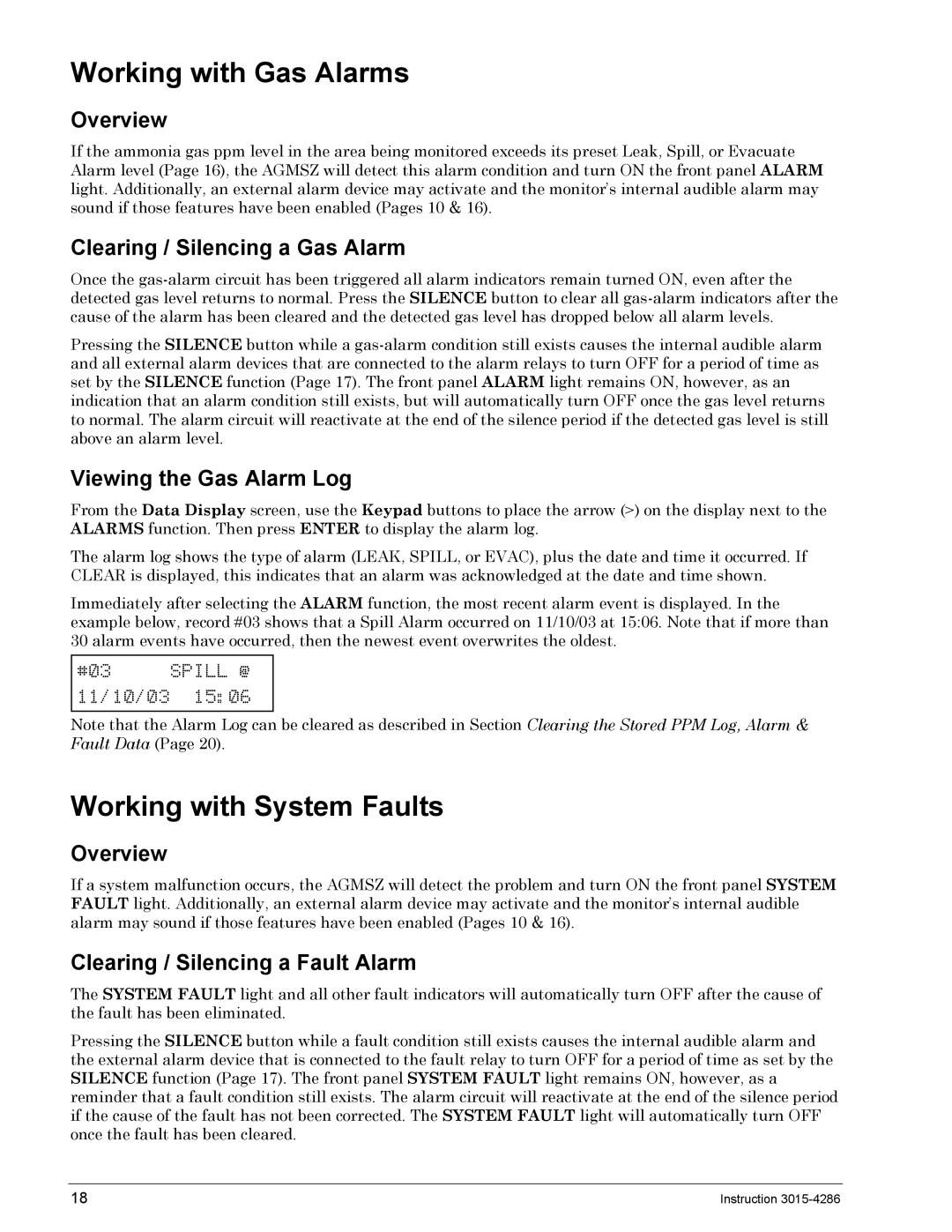3015-4286 specifications
Bacharach 3015-4286 is an innovative and versatile instrument, specifically designed for professionals in industries where air quality monitoring is paramount. This model stands out due to its advanced features and technologies, making it a preferred choice for those needing accurate and reliable measurements of various gases.One of the main features of the Bacharach 3015-4286 is its multi-gas detection capability. It can simultaneously monitor up to five different gases, providing users with a comprehensive understanding of their environment in real-time. This is particularly beneficial in applications such as HVAC, refrigeration, and industrial processes, where the presence of gases like carbon dioxide, ammonia, and refrigerants can have significant safety and regulatory implications.
The device utilizes state-of-the-art sensors that ensure high sensitivity and selectivity to the target gases. These sensors are designed for quick response times, allowing users to detect any changes in gas concentrations almost instantaneously. This responsiveness is crucial for environments where rapid decision-making is necessary to ensure safety and compliance with environmental regulations.
In addition to its gas detection capabilities, the Bacharach 3015-4286 features a user-friendly interface. The large display screen provides clear readouts, and the intuitive navigation system allows users to easily switch between different measurement modes and settings. This accessibility makes it suitable for both experienced professionals and those who may be new to gas monitoring technologies.
Battery life is another characteristic that sets the Bacharach 3015-4286 apart from its competitors. With efficient power management, the device can operate continuously for extended periods without the need for frequent recharging or battery replacement. This reliability is crucial for fieldwork, where access to power sources may be limited.
Moreover, the device is compact and lightweight, enhancing its portability. Users can easily transport the Bacharach 3015-4286 to various job sites without inconvenience. Its robust design ensures durability in diverse working conditions, further establishing it as a dependable tool in the field.
In summary, the Bacharach 3015-4286 is a cutting-edge gas detection instrument offering multi-gas detection, advanced sensors, user-friendly operation, long battery life, and portability. These features make it an indispensable asset for professionals seeking to ensure safety and compliance in their working environments.

